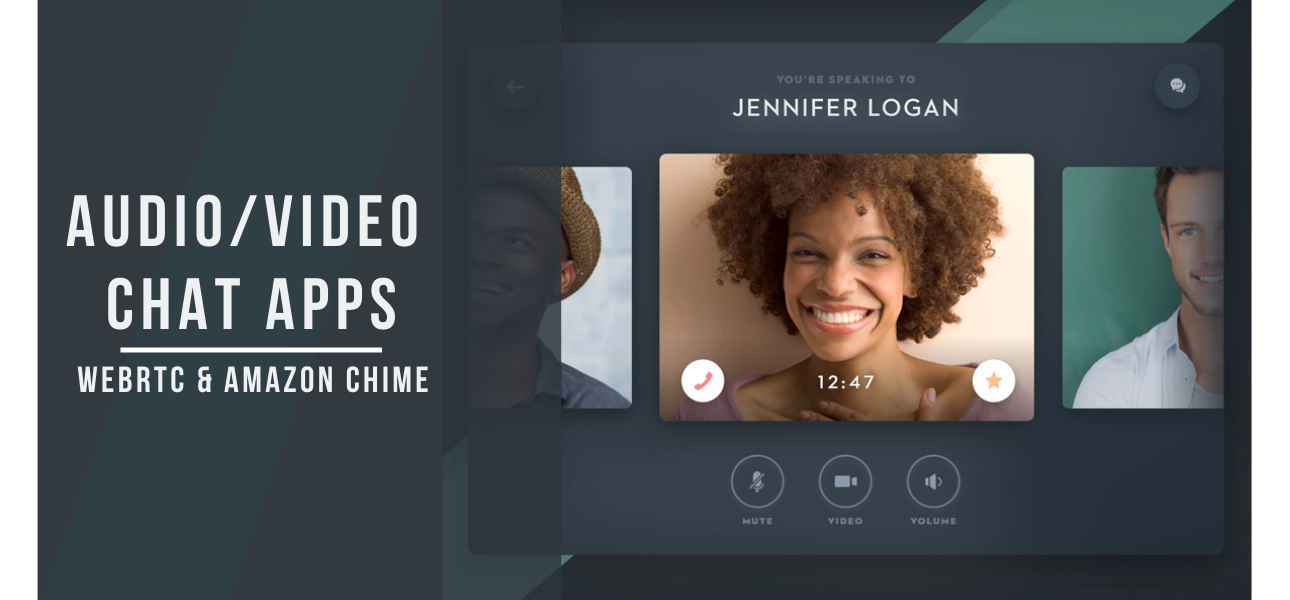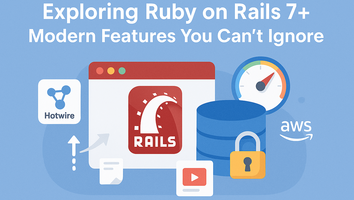Covid-19 dropped on us like a bomb, putting people’s health in danger, economy at risk, and shaking the work culture across organizations. Yet, organizations had a way to work it out, if it meant work from home, various management tools made maintaining the work balance a real smooth procedure. Importantly, if it weren’t for technologies like video calling - it would have been more difficult to keep in touch with the employees.
Video chats have taken the level of communication to another level, with the real-time audio & video chat among users, the corporate life has definitely become convenient. On a further note, due to the pandemic, social distancing has become a strict norm for people to follow to adhere to the major safety precautions; audio/video chat is the only best way to stay in touch with your contacts remotely. And this spike in the interest of video calling, audio & video apps have seen a rise in demand. They have resulted in immense success with an increase in the revenues.
With the unprecedented shift to work-from-home, the popularity of such calling apps saw a huge incline, according to Grand View Research report, video conference app development was valued at $3.85 billion in 2019 and is forecast to register a CAGR of 9.9% from 2020 to 2027. According to Statista, “the global downloads of some of the key players surged by more than 100% in March 2020”, and with the present scenario, the rise in demand for these apps will continue to grow in the foreseeable future.
The development of such apps requires thorough research, analysis, and a good design to cater to the needs of users across the domain. It is crucial to first determine the target audience, create a feature list, choose the right tech stack, and of course the budget. If you are enthusiastic about building an audio/video calling app for this highly lucrative market then you should consider the following steps.
Step#1: Figuring Your Target Consumers
Understanding the target market will help you in understanding what kind of app you really need to deliver.
Step#2: Determining the App Features
- User registration
- Profile management
- Profile management
- Search and add contacts
- Status (available, idle, busy, away, etc.)
- Chat/text messaging facility
- Video & audio calls
- Group calls
- Encryption
- Push notifications
- Screen sharing
Step#3: UI/UX Design
An important step, you need to integrate all the essential UX components within the approved concept.
Step#4Technology Stack
A general idea about the technology stack that may be required to create an app:
- Swift, iOS SDK for iOS app development
- Java, Android SDK for Android app development
- Angular, Laminas, Symfony, Laravel frameworks
Step#5: Development & Testing
- Back-end Development
This stage of the development process regulates the functional code of the app. The development team works on the app & web server and builds the database. While creating a video call app, the main focus of the functionality shifts to optimizing aspects as the app needs to perform well while dealing with huge amounts of data and even during heavy load, this means that the development process needs to be fully dedicated to building the app to its full potential.
- WebRTC
WebRTC also known as web real-time communications supports the app on desktop and mobile systems through a wide range of APIs. It requires the support of major browsers like Mozilla, Opera, and Google.
For a basic app incorporating the video call functionality, you can make use of the following APIs, One, RTCPeerConnection activates audio/video communication along with bandwidth management and encryption. Two, RTCDataChannel allows P2P communication with all types of data. Three, MediaStream facilitates the app in accessing the stream via camera and microphone.
WebRTC is an open-source project that enables real-time communication of audio, video, and data in Web and native apps. WebRTC works peer-to-peer, thus allowing users to connect via the most direct route possible.
WebRTC is built to cope with real-world networking: client applications need to traverse NAT gateways and firewalls and peer to peer networking needs fallbacks in case the direct connection fails.
As part of this process, to fetch the IP address of the computer, WebRTC APIs use STUN servers, and in case of peer-to-peer communication fails, it makes TURN servers to function as relay servers.
WebRTC has several JavaScript API like:
- getUserMedia(): for capturing audio and video
- MediaRecorder: for audio & video recording
- RTCPeerConnection: for streaming audio & video between users
- RTCDataChannel: for streaming data between users
- Amazon Chime
Amazon Chime is a communications service used for developing audio calling, video calling, and screen sharing capabilities directly to the applications using the Amazon Chime SDK. By using Amazon chime you can chat, place business calls in organizations, all using a single application. Developers can conveniently use their communication and services to implement the audio/video chat features in the applications. To enable the enterprises to shift telephony tasks to AWS, Amazon Chime Voice connecter service is used. The voice connector can be used for low-cost SIP trunking from on-premises or cloud-based phone systems. It supports both inbound and outbound. To build PSTN calling in the app developers can use Voice Connectors or even stream audio for phone call analysis and for ML purposes.
Amazon Chime SDK allows developers to create real-time experiences in the applications by adding audio and video calling, screen sharing & viewing capabilities to power Amazon Chime.
Features that can be added in your application:
1. Online Meetings
- Schedule your meetings
- Create and use personalized meeting URLs
- Optimized meeting experience
- Join meetings with Alexa
- Dial-in
- Amazon chime call me
- Share your screens
- Visual roaster and video tiles
- Record meetings
2. Video Conferencing
- High-quality wideband audio and high-definition video conferencing for up to 16 people on your desktop, or 8 people on mobile devices.
- Conference room video system: Amazon Chime supports most Session Initiation Protocol (SIP) and H.323 video conferencing systems, and meeting participants can join meetings by simply entering the meeting ID into the device console.
- Dolby voice room
3. Team Collaboration
- Chat
- Chat room
- One-to-one audio & video calls
- Start meetings with slack
- Smart Presence
- Chatbots
- Incoming web hooks
4. Business Calling
- Single application
- Receive phone calls
- Voicemail
- Place phone calls
- Switch between devices
- Call history
- Turn calls into meetings
- Text messaging
5. Security and Administration
- Built on AWS cloud
- Select hosting regions
- AES 256-bit encryption
- Invite from slack workspace
- AWS CloudTrail Integration
- Claim your domain by automatically adding the users to your account as they sign up for Amazon Chime.
- Single Sign-On
- User management
- Reporting
- Call Detail Records
- Amazon Chime Management APIs
Amazon Chime SDK features
- Development
- AWS Signature Version 4 APIs along with AWS SDK support
- High-quality audio and video
- Screen sharing
- Volume notifications and mute controls
- Device controller
- Active speaker
- Optimized experience
- Meeting events
2. Operations
- Attendee proximity
- TURN support
- Scaling to peak loads
3. Features
- Workflows with Amazon EventBridge events
- Voice Connector for PSTN interconnect & streaming audio
Step#6: Testing
At this stage, the code is thoroughly checked and bugs are eliminated. This is an important stage to launch a highly successful app without any issues.
How Much Does a Video Calling App Cost?
The factors below, determine the cost of the video call app development project:
- The platform used like iOS, Android, or cross-platform for app development.
- The number of people working on your team. The team can include iOS developers, android developers, project managers, backend developers, business analysts, UX/UI designers, and QA engineers.
- The set of features you have decided upon. The more the functionalities, the higher the price of your development solution is.
- The rates set for hiring and working with team experts (aside from the experience, expertise, and skills of the team members, their location will also make an impact on the cost estimate as it links the expected rate with the rates on the local job market).
- The project tech stack.
To get professional advice, contact us by [email protected], and we will consult you for free on a cost estimate of your project.
Conclusion
Building such apps are full-fledged software development projects that require thorough planning and analysis of technological and budgeting aspects for realizing the project successfully. While searching for cost-effective and functional options, it is highly advisable to consider partnering with the right solution providers like W3villa.



